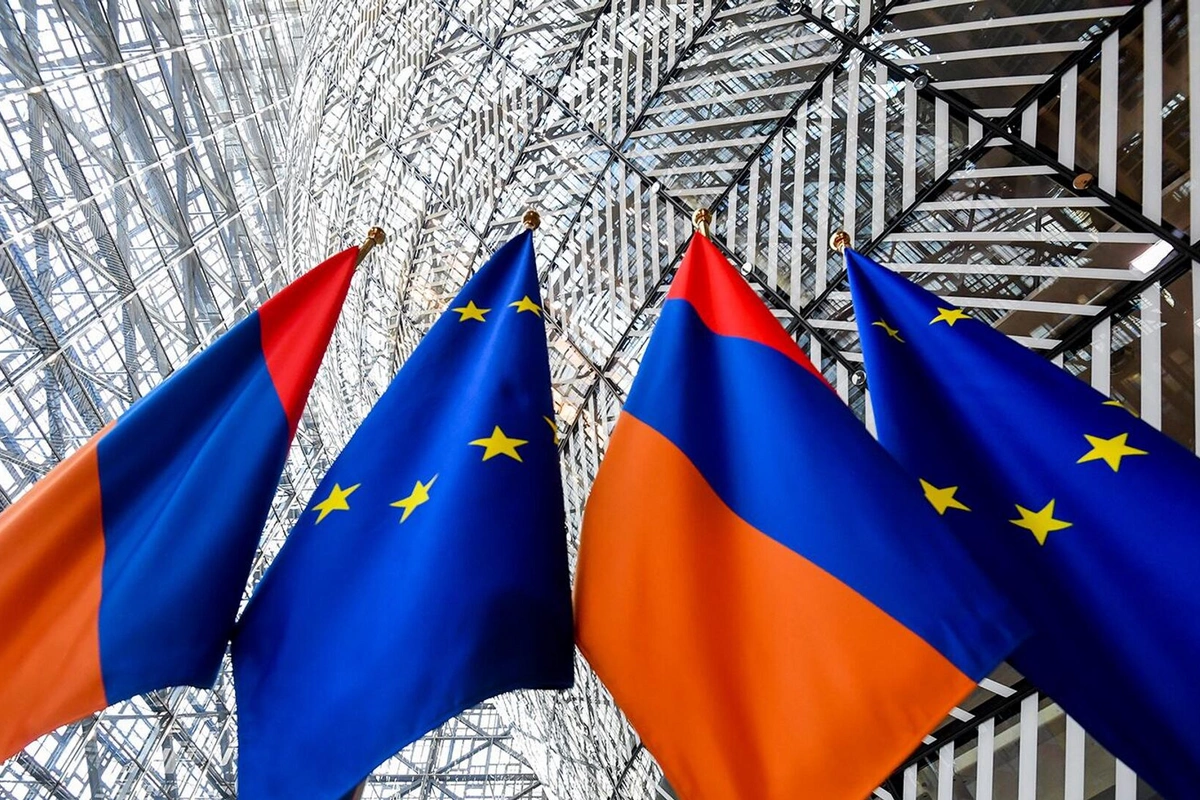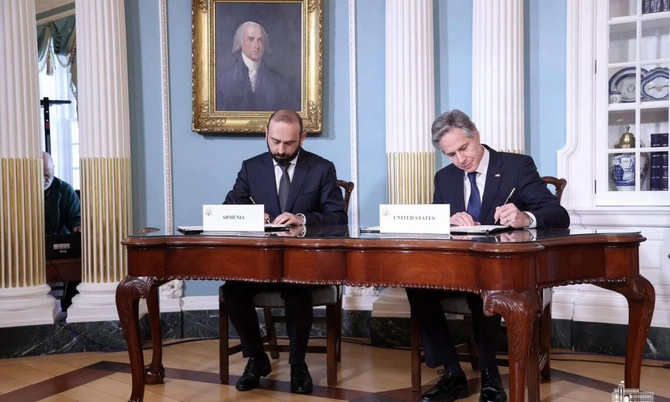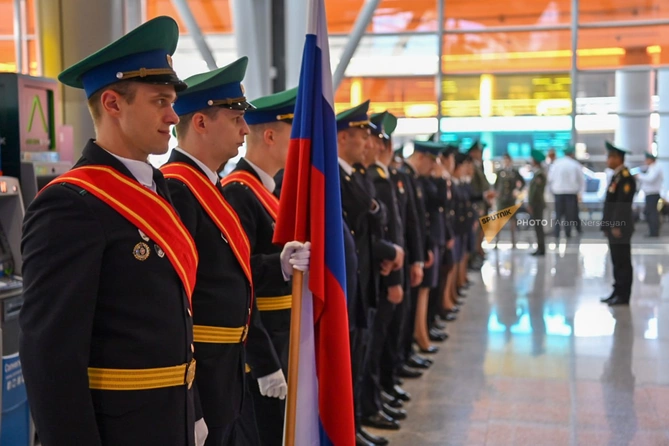
Armenia appears to be exploring a potential reorientation in its foreign policy, signaling a shift away from its traditional reliance on Russia toward closer cooperation with the European Union and the United States. This pivot comes amid continuously strained relations with Moscow, tense co-existence with Azerbaijan, as well as the renewed EU interest in the South Caucasus.
Indeed, this growing Western interest has been underscored by a rising number of bilateral political contacts with the Armenian leadership and an early January statement by Armenian PM Nikol Pashinyan that Yerevan intends to pursue EU membership. Moreover, on January 15, Yerevan also signed a strategic partnership agreement with the US, marking a qualitatively new stage in their bilateral relations. This builds upon a series of previous steps, such as Brussels’ expanded civilian mission to Armenia and the initiation of a visa-liberalization process.

Armenian Foreign Minister Ararat Mirzoyan and U.S. Secretary of State Antony Blinken meet in Washington (Photo: Secretary Antony Blinken, X, January 14, 2025
The timing of this shift coincides with the EU’s broader push to strengthen its influence in the region, particularly as the South Caucasus increasingly serves as a critical corridor connecting Europe with Central Asia and beyond. Armenia, with its common border and friendly ties with Georgia-an EU candidate-recognizes an emerging opportunity in aligning closer with European structures.
However, Armenia’s growing interest in the EU has provoked unease in Moscow, which sees Yerevan’s potential realignment as a geopolitical betrayal. Russian officials have warned that Armenia’s drift toward the West could lead to a serious reassessment of bilateral ties. Moscow views these developments as part of a broader Western strategy to destabilize the region and undermine its role as a mediator between Armenia and Azerbaijan.
The deterioration in Armenian-Russian relations can be traced back to Moscow’s perceived inaction during critical moments for Yerevan. The 2020 Nagorno-Karabakh war and the subsequent fall of the separatist entity in 2023 exposed Armenia’s vulnerability and raised doubts about the reliability of its Russian ally. Russia’s failure to intervene decisively, compounded by its distraction with the war in Ukraine, has led to growing resentment in Yerevan. Armenia has also protested against inflammatory rhetoric directed at its leadership on Russian state media, further straining ties.
Armenia’s dissatisfaction with Russia has been matched by concrete actions. The Armenian government has reduced its reliance on Russian military equipment, with purchases falling from 96% to less than 10%, while diversifying its defense partnerships with countries like India, France, Greece, and Iran. This diversification reflects a broader strategy to reduce dependence on Moscow and explore alternative security arrangements. Armenia has also requested the withdrawal of Russian border guards from Zvartnots Airport, signaling its intent to reassess the bilateral relationship. A similar fate may await other Russian forces stationed along Armenia’s borders with Iran and Turkey.

Photo: Russian border guards at Yerevan’s Zvartnots airport/Sputnik
Yet Armenia’s pivot is fraught with challenges. The country remains economically and militarily dependent on Russia, with bilateral trade reaching $7.3 billion in 2023-a 43% increase from the previous year, while in 2024 the figure is expected to double. Moscow could leverage this economic dependency as a pressure point. Additionally, Armenia’s membership in the Russian-led Collective Security Treaty Organization (CSTO) has historically provided a sense of security in Yerevan, particularly against Azerbaijan and Turkey. From Armenia’s perspective, this did not materialize.
Nevertheless, withdrawing from the CSTO or reducing ties with Moscow raises critical questions about Armenia’s defense strategy in the event of a military escalation with Azerbaijan, especially given the frequent tensions along their border. In the same vein, leaving another Russia-led multilateral grouping, the Eurasian Economic Union (EAEU), would harm Armenia’s economy, which has largely benefited from its membership. Still, Armenia has taken steps to downgrade its CSTO membership, effectively bringing it one step closer to official withdrawal. Moreover, while Yerevan has sought to strengthen ties with partners such as Iran and France, these countries are unlikely to match the level of security guarantees that Russia has historically provided.
In the economic sphere, Armenia’s potential alignment with the EU could open new opportunities, but it must carefully navigate its deep economic ties with Russia. A full Western pivot could invite major economic and political retaliation from Moscow. After all, Armenian businesses have benefited from closer ties with Russia.
Ultimately, Armenia appears to be testing the waters for what might be called a multi-vector foreign policy, seeking to balance its traditional alliances with new partnerships. While this approach offers some flexibility, it also carries risks. Armenia’s success in navigating this transition will depend on its ability to manage relations with both Moscow and Brussels while maintaining its security and economic stability in an increasingly precarious regional environment.
Share on social media